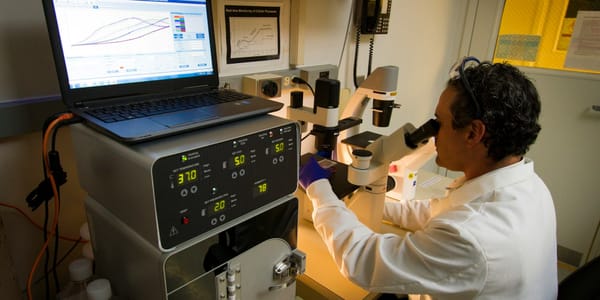Breakthroughs in Solar Energy Technology

Recent advancements in solar energy technology have been transformative, offering innovative solutions to enhance efficiency, sustainability, and integration into various environments. These breakthroughs are crucial as the world increasingly shifts towards renewable energy sources to combat climate change and reduce carbon emissions.
Transparent Photovoltaics (TPVs)
One of the most significant advancements in solar technology is the development of transparent photovoltaics (TPVs). These solar cells are designed to be transparent to visible light, allowing them to be integrated into windows and other transparent surfaces without obstructing views. TPVs are particularly promising for building-integrated photovoltaics (BIPV), where they can be used in fully glazed buildings to generate power while maintaining aesthetic appeal. The potential applications of TPVs are vast, including their use in agrivoltaics, where they can be installed over crops without significantly blocking sunlight[2].
Building-Integrated Photovoltaic Thermal (BIPVT) Systems
Building-integrated solar photovoltaic thermal (BIPVT) systems represent another innovative approach. These systems combine photovoltaic and thermal technologies to simultaneously generate electricity and capture heat. Recent reviews highlight the evolution of BIPVT designs, emphasizing their aesthetic value and efficiency. These systems can achieve electrical efficiencies of up to 20% and thermal efficiencies of 80%, making them a highly effective solution for energy generation and building heating[3].
Floating Solar Systems
Floating solar systems are gaining attention as a viable alternative to traditional land-based solar installations. By placing solar panels on water bodies, these systems offer several advantages, such as reducing evaporation and operating at lower temperatures, which can enhance efficiency. Floating solar is particularly beneficial in regions with limited land availability, providing an innovative solution to space constraints while contributing to renewable energy generation[5].
Smart and Automated Solar Panel Cleaning
The maintenance of solar panels is crucial for optimal performance, and recent advancements in IoT-based technologies have led to the development of smart and automated cleaning systems. These systems use microcontrollers and Android devices to automate the cleaning process, reducing manual labor and ensuring that panels remain free of dust and debris. This innovation not only improves efficiency but also makes solar energy more accessible and cost-effective for users[4].
Perovskite and Tandem Solar Cells
Perovskite and tandem solar cells are emerging as promising alternatives to traditional silicon-based solar cells. These technologies offer higher efficiency and lower production costs, making solar energy more affordable and accessible. Perovskite solar cells, in particular, have shown rapid improvements in efficiency, positioning them as a key player in the future of solar energy technology[8].
Challenges and Future Directions
Despite these advancements, challenges remain in the solar energy sector. The disposal and recycling of solar panel waste is a growing concern, with significant amounts of waste expected in the coming decades. Effective recycling methods and policies are needed to address the environmental impact of solar panel disposal[7].
Moreover, the integration of solar energy systems with efficient energy storage solutions is crucial for ensuring a consistent power supply. Continued research and development in battery materials and system optimization are essential to fully harness the potential of solar energy[8].
In conclusion, the recent breakthroughs in solar energy technology are paving the way for a more sustainable and efficient energy future. Innovations such as transparent photovoltaics, BIPVT systems, floating solar, and automated cleaning technologies are enhancing the viability and appeal of solar energy across various applications. However, addressing challenges related to waste management and energy storage will be critical to realizing the full potential of these technologies.
Citations:
[1] Recent Developments and Future Advancements in Solar Panels Technology https://www.semanticscholar.org/paper/e1d2425262db3a97b03e29aa1ba0013acdd7dc41
[2] The Next Frontier of Solar Energy: Transparent Photovoltaics https://www.semanticscholar.org/paper/605d57ccba78ab881ea2fa8cbfac42ebf59ccecd
[3] Building-integrated solar photovoltaic thermal (BIPVT) technology: a review on the design innovations, aesthetic values, performance limits, storage options and policies https://www.semanticscholar.org/paper/bc6036fc92e4e363481e345a6d4a6bf8fda28f5b
[4] IoT based Smart and Automated Solar Panel Cleaning System https://www.semanticscholar.org/paper/14506f06b66912f9420d5ff61d41ea803f29d324
[5] The Bibliometric Analysis of Electricity Generation from Floating Solar https://www.semanticscholar.org/paper/a703ca7cbee8200412c743cb0151d445e5bb1be8
[6] Comparison of sun-tracking and fixed solar panel data with Python's PVLib classes https://www.semanticscholar.org/paper/04a51a4361df4a27e35bf671bac33d862e3e906f
[7] Strategic overview of management of future solar photovoltaic panel waste generation in the Indian context https://www.ncbi.nlm.nih.gov/pmc/articles/PMC9016676/
[8] Maximizing Solar Power Potential: A Study Case of Solar Radiation and Panel Positioning in South-Eastern Region of Romania https://www.semanticscholar.org/paper/433b8245225b89ab73b695d72c420c6d4291f86f



